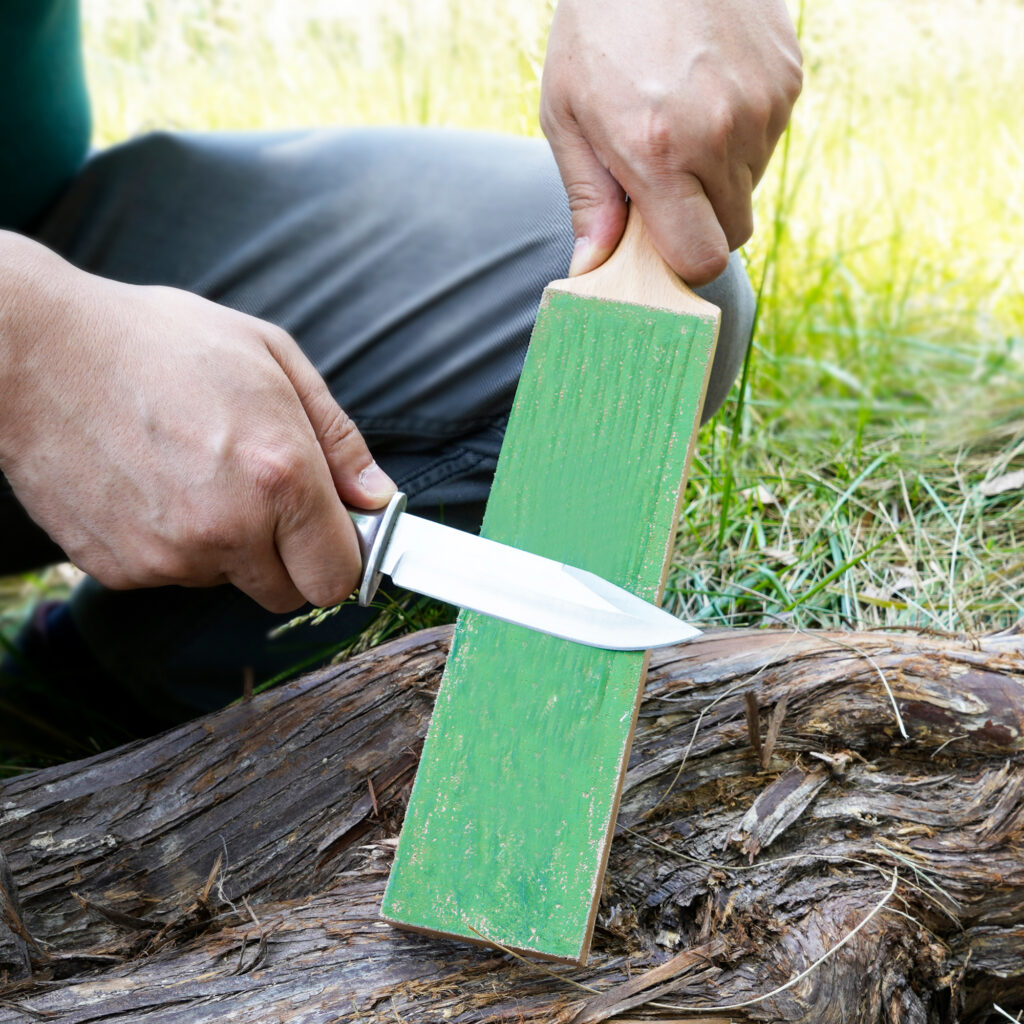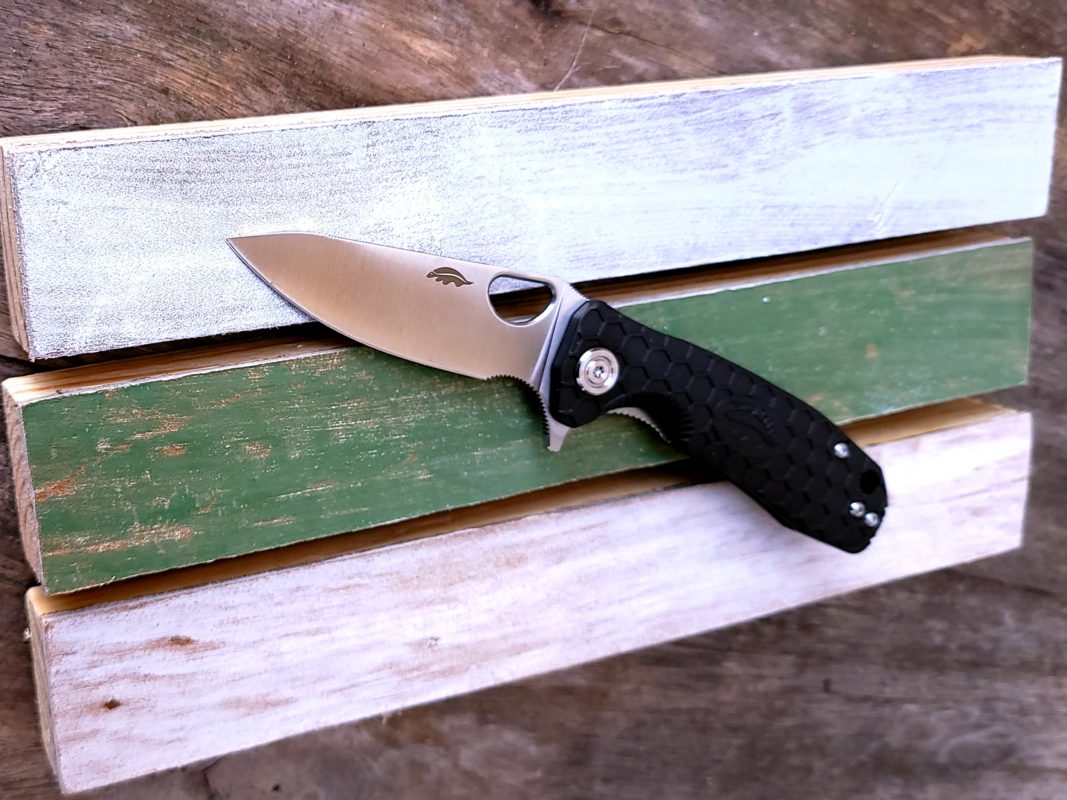Knife maintenance’s ultimate guide! This comprehensive post will cover the skill of stropping a knife and its relevance in maintaining blades. Understanding knife care is essential for maximizing the performance and lifespan of your blades, whether you’re a professional chef or a home cook.
What is the Basics: What is Stropping a Knife?
Stropping a knife sharpens it. It involves gliding the knife blade over a strop, a long strip of leather or fabric coated with a polished abrasive compound. This operation aligns the blade’s tiny tooth-like features, creating a sharp, precise cutting edge.
The Purpose and Benefits of Stropping
- Stropping helps maintain knives. First, it removes small burrs or flaws on the blade from frequent use or sharpening. Stropping sharpens the edge and improves knife efficiency.
- Second, stropping straightens the blade’s edge. Use might distort or misalign the cutting edge. Stripping periodically optimizes the edge’s cutting potential.
- Stropping benefits:
- Improved cutting
- blade durability
- Sharper edges
- Sharpening between sessions
Different Types of Strops

Leather Strops: Leather strops are popular for stropping knives. They clean the blade softly without removing material. Abrasive chemicals can be added to leather strops.
Fabric Strops: Denim or canvas fabric strops are more harsh. They remove minor defects and are good for first sharpening before using a leather strop.
Balsa Wood Strops: Balsa wood strops are great for delicate or polished blades. Balsa wood’s softness allows precision stropping, preserving the blade’s edge and sharpening it.
Honing Films: Honing films are thin abrasive sheets on a flat surface. They offer consistent grit sizes and easy sharpening control. Honing films are popular with precision-stropping enthusiasts.
Stropping Compound Selection

Abrasive stropping compounds improve sharpness. The blade and required abrasiveness determine the compound. Common stropping compounds:
Diamond Compound: Diamond compounds are very abrasive and can swiftly remove material and sharpen the blade’s edge. They are used with coarser strops or dull blades.
Chromium Oxide Compound: General stropping uses chromium oxide chemicals. They clean and sharpen with a fine abrasive surface. Different grit sizes of chromium oxide compounds enable refining.
Iron Oxide Compound: Iron oxide compounds, popularly known as “red rouge,” are finer abrasives used for ultimate polishing and mirror-like finishes. They sharpen the edge and improve cutting performance with leather strops.
How to Strop a Knife: Step-by-Step Guide

Knife-stropping demands accuracy. Step-by-step instructions for stropping:
Prepare the Strop: Clean and secure your strop. Apply a tiny amount of leather strop compound evenly.
Hold the Knife Properly: Hold the knife by the handle with a strong grip, keeping your fingers away from the cutting edge. Keep the stropping angle constant.
Start Stropping: With the knife spine on the strop, slant the cutting edge. Lightly trail the blade away from the edge. Pressing too hard can ruin the edge.
Alternate Sides: Strop the opposing side after each stroke. This ensures balanced sharpness.
Repeat and Test: Stropping each side of the blade many times and evaluating sharpness. To evaluate the knife’s performance, cut a piece of paper.
Common Mistakes to Avoid
Stropping is simple, but beginners should avoid these blunders. Avoid these mistakes for a successful stropping procedure and maximum knife benefits:
Using Excessive Pressure: Stropping too hard is a common mistake. Refine the edge, not violently remove stuff. Light, constant pressure yields best results.
Inconsistent Angle: A sharp edge requires a consistent angle. Deviating from the desired angle might harm the blade or cause unevenness. Stropping requires technique and angle awareness.
Neglecting Strop Maintenance: A dirty or worn-out strop can hamper stropping and give poor results. Clean your strop regularly to eliminate chemicals and debris. Replace your strop when it wears out.
Skipping Sharpening: Stropping does not replace sharpening. Sharpen your knife before stropping. Stropping sharpens and maintains an edge.
Over-stropping: Stropping is good, but too much might round off the edge. Check your blade’s sharpness and stop stropping when it’s sharp enough.
Common Questions
Knife strops: how often?
Knife usage and blade type affect stropping frequency. When cutting performance decreases, strop your knife every few weeks.
Leather belts as strops?
Leather belts are not good for stropping knives. Belts are composed of softer leather and lack stiffness for stropping. For greatest results, get a strop.
Does stropping beat honing?
Knife care uses stropping and honing differently. Honing realigns the edge between sharpenings, while stropping polishes it. To keep an edge sharp and lasting, employ both methods.
Can stropping repair a blade?
Stropping does not fix substantial damage or dull blades. It maintains and refines edges. Before stropping, have your blade properly sharpened if it’s damaged or dull.
Stripping serrated knives?
Serrated knives’ edge structure makes stropping unsuitable. Maintaining serrated blades requires particular sharpening. Sharpening serrated blades requires manufacturer instructions or professional help.
Should I strop both blades?
To keep the blade balanced, rasp both sides. Stropping both sides ensures equal sharpness and prevents uneven cutting.
Conclusion
Finally, stropping is vital for knife performance and longevity. Regular stropping improves cutting, edge retention, and blade life. Avoid mistakes, choose the right strop and compound, and strop properly. This tutorial will help you confidently maintain your knives and enjoy razor-sharp edges.
Overall, stropping a knife comprises polishing its edge using a strop. It improves cutting performance, blade longevity, edge retention, and sharpening between sessions.
Based on your preferences and knife demands, choose a strop from leather, fabric, balsa wood, or honing films. For required abrasiveness, choose a stropping compound like diamond, chromium oxide, or iron oxide.
